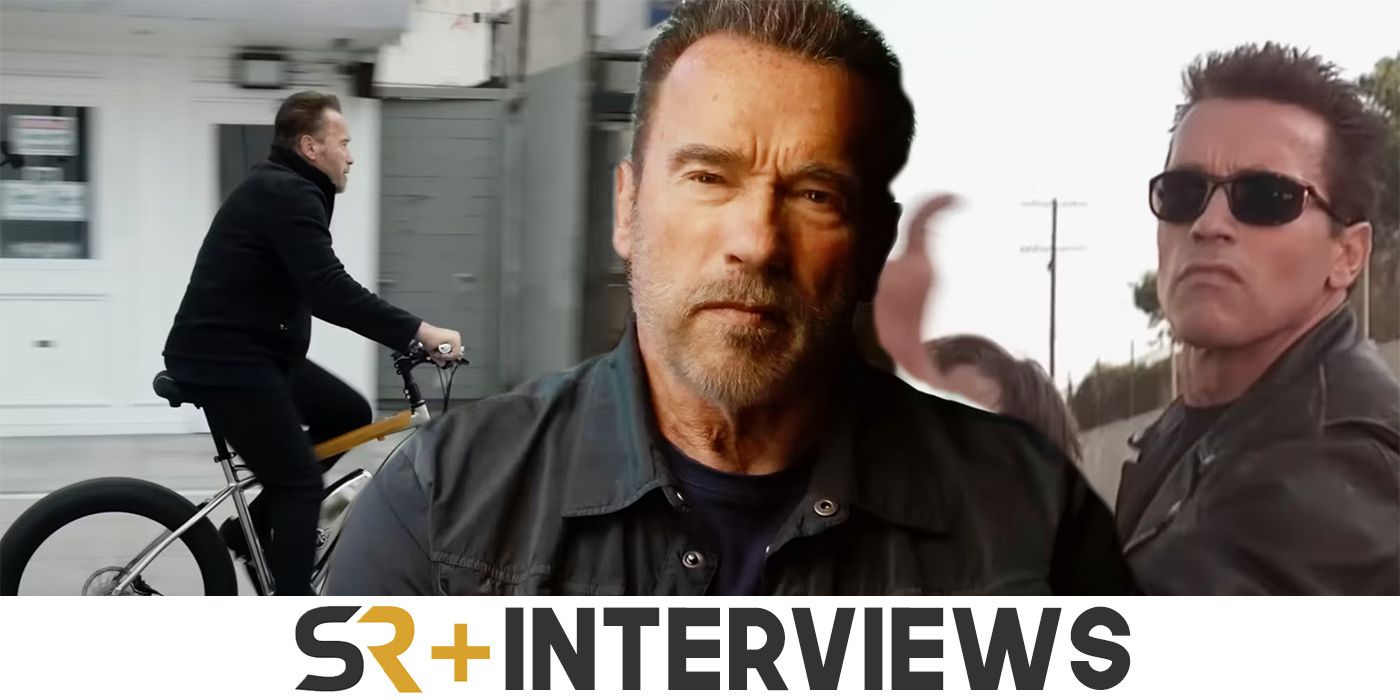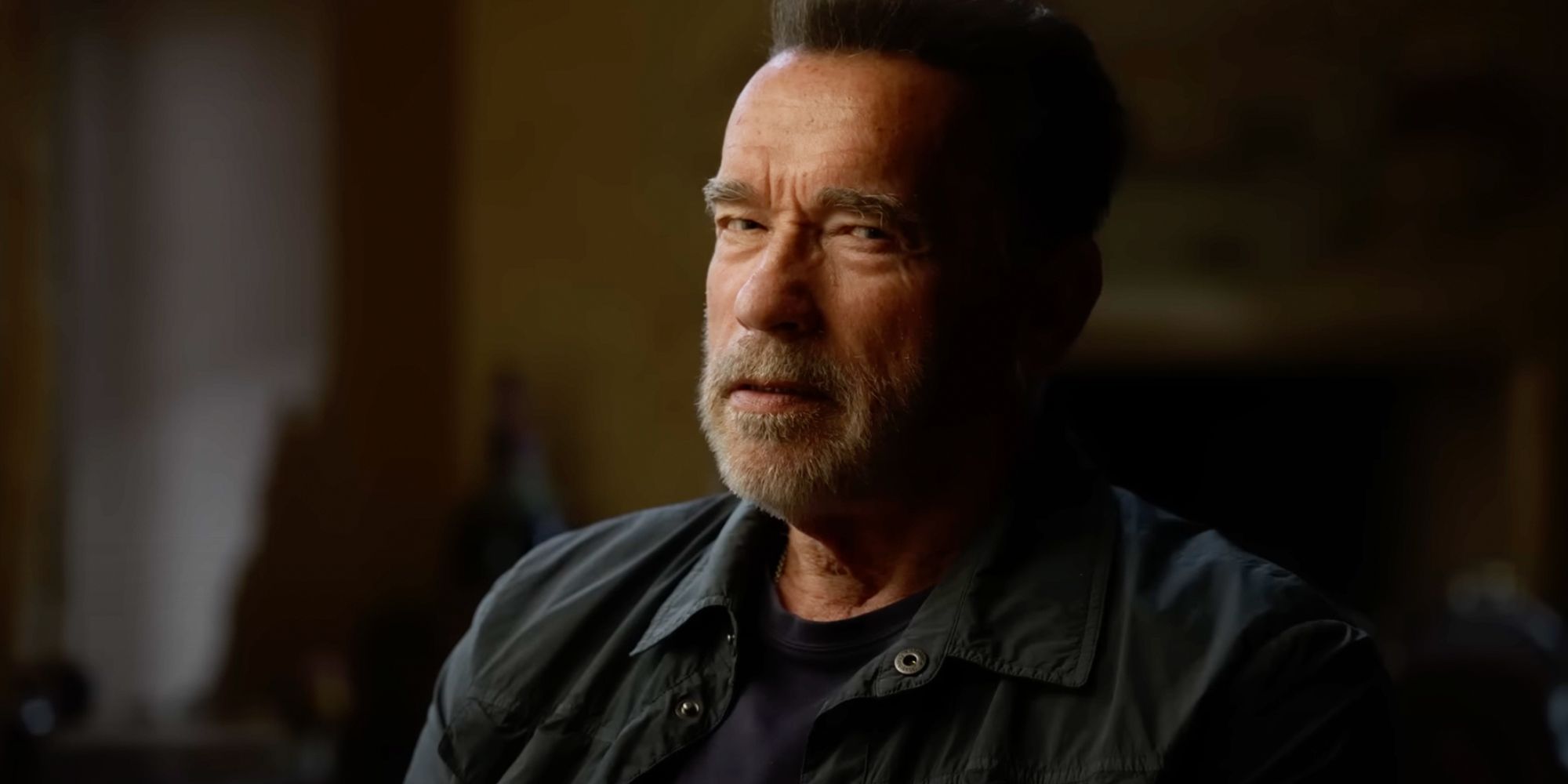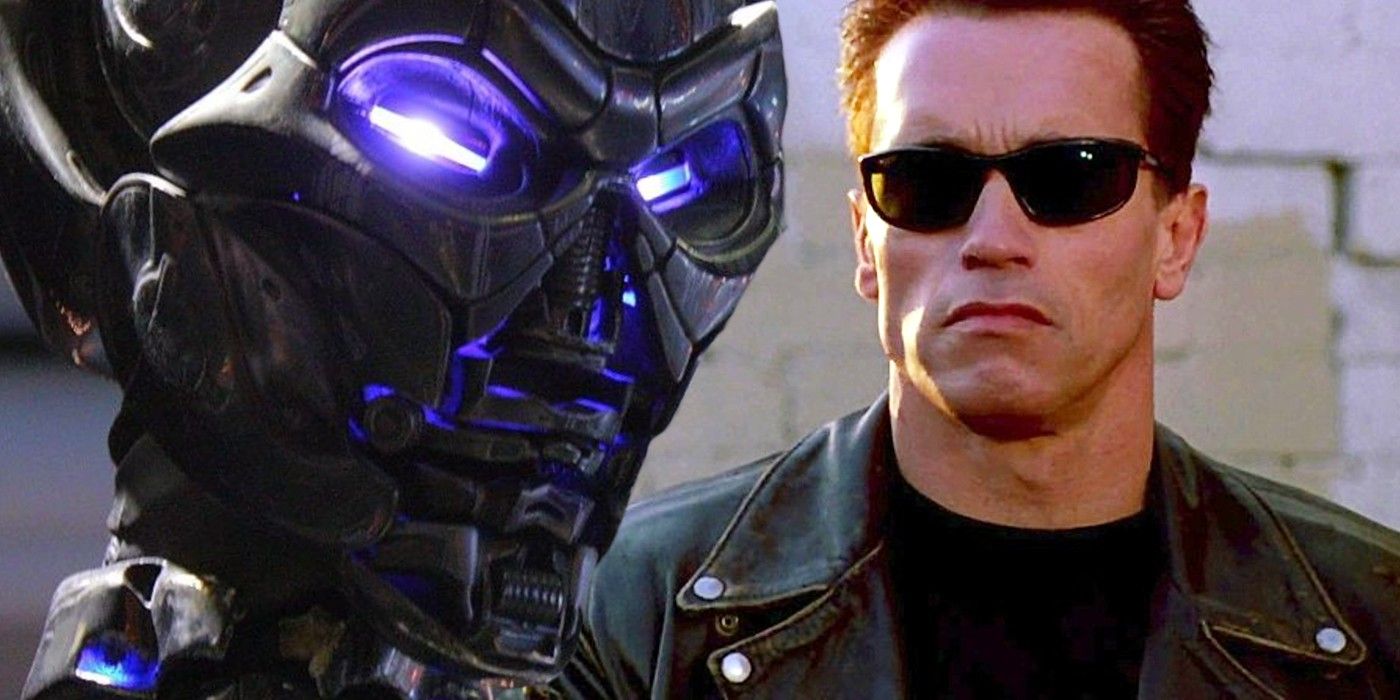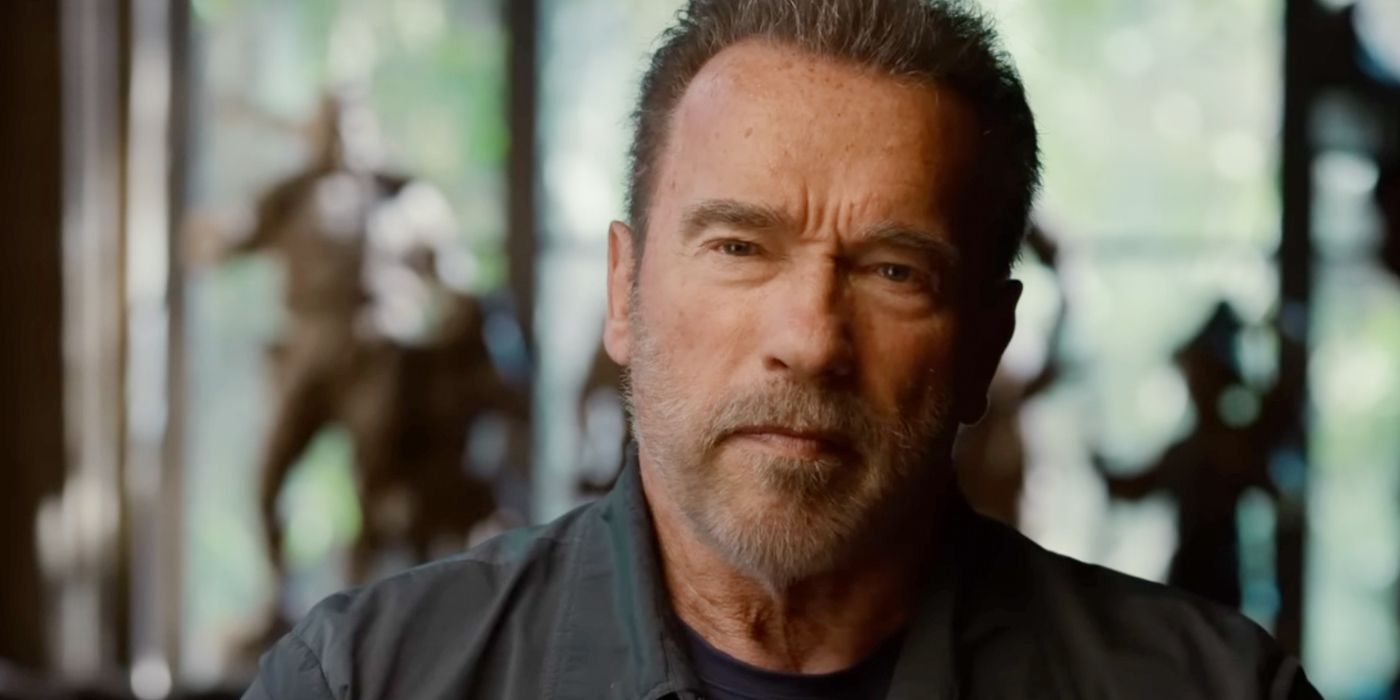Enjoy a look into the life of a legend with Arnold, Netflix’s three-part docuseries about bodybuilder, actor, and governor Arnold Schwarzenegger. Directed by Lesley Chilcott, the series utilized archival footage, new interviews, and more to tell the tale of a monumental figure. Arnold endeavors to paint a complete picture of its subject’s storied life and has something to offer for fans of any portion of Schwarzenegger’s many accomplishments, while filling in the gaps between each one.
For the look of the new footage in Arnold, Chilcott turned to director of photography Logan Schneider, with whom she has previously collaborated on projects like Watson and Codegirl. Schneider’s vision for Arnold was that the documentary borrows stylistically from the world of feature films as much as possible. To accomplish this, Schneider used Arri Mini LF cameras with Signature Primes and prototype Signature Zooms, Arri Mastergrips for verite focus, Steadicam, and Exocarts.
Logan Schneider spoke with Screen Rant about creating the look of Arnold, working with a screen legend, and more. Note: This interview has been lightly edited for length and clarity.
Logan Schneider on Arnold
Screen Rant: You've worked with this director, Lesley Chilcott, many times. How did your collaboration start?
Logan Schneider: I met Leslie when she was producing for David Davis Guggenheim. They had done Inconvenient Truth and It Might Get Loud and were about to do Waiting for Superman. In the meantime, they did a film for Obama in 2008 that played at the 2008 Democratic Convention.
I was living in Montana after college, working up there and planning on coming to LA, but I got a call, like, "Is there a local camera assistant that can come in and help out on our shoot?" I met them on that shoot and said, "Hey, listen, I love working with you guys. I'll fly down if you need me, anytime. I'd love to work with you again," so they let me come down and work on the next part of that shoot. Then, when they started Waiting for Superman that fall, I flew down for that and moved a month later.
During Waiting for Superman--it was like a 14-month shoot--Lesley started to direct second units. She had been a producer for docs and spent 20 years as a commercial producer, and just started to get the bug. She decided to want to be a director and shot off, so I kind of did everything with her since then. It's been a really lovely relationship working together and having that kind of easy trust and easy understanding of what we both like so that we're not focused on the basics; we're focused on pushing it further on the day. I think long creative relationships are super important to get past the more cursory filmmaking choices.
And in terms of Arnold, was there something about him, his journey, or his personality that made you want to shoot this the way that you did?
Logan Schneider: Arnold is unique. My Arnold Schwarzenegger movies were True Lies, T2, Total Recall, Predator. I came to Predator later, but it might be my favorite now. He was in a bunch of great movies, and then he had these other parts to his life, so it's not just like "This is a career of someone in the film industry." There's much more depth to it, starting with him growing up in Austria, and then bodybuilding. His business side is really underestimated and not well-known. Then the acting, the politics, the Kennedys--he's just had an epic life, so when Lesley mentioned the project, it was like, "Let's do that. That sounds so much fun." And it was super fun.
You shot interviews, you shot verite, and you kind of recreated scenes from his life. Is there a challenge in making all of that cohesive?
Logan Schneider: Yes. There were a couple of big challenges with style. One is because he's this larger-than-life dude, and you want him to be Arnold, but at the same time, it's not a Terminator movie. It's an intimate story that you want that audience to connect to, and be able to identify with where possible. We had to strike this balance of this larger-than-life feeling and also a presence. We talked a lot about how that interview would work, and how to light it in a way that looks cool, but not just cool; it had to be accessible. Cracking what the main interview would be, I think, was the first style challenge that we felt we had to overcome.
He let us have a lighting test, and we found a few things out pretty quickly. We had spherical and anamorphic--the anamorphic felt too much like we were in a movie, and spherical felt more like we were there with him, so we went that way. Large format helped isolate him. I lit it more like how I would light a movie than a traditional interview lighting. I always find that more interesting, but it also seemed appropriate for someone like him that has this kind of cinematic life.
Once we had that figured out, it became, "How do we tell stories from his past without it being like a cheesy recreation?" We don't use that word; Lesley calls it original photography, and it needs to be its own thing. For our inspiration, we built looks that were based on Red Balloon, and Sound of Music a little bit. There was one that was based on a recent movie Beguiled, which had this amazing low-light scene near the start of sun creeping into a forest, which we kind of expanded on for a forest scene.
We tried to build looks within these eras that we were exploring so that it would be evocative of those moments, but with less of a plastered-on feel than happens a lot. We built those ahead of time, we exposed with those in the camera, and we really tried to shoot it like it was its own film stock and commit to it early. I had a great DIT who helped me build those: Eli Berg, who I've known forever and is one of my favorite people. So, that was another part of this tripod.
The third part would be the verite. In verite, we want it to be very natural. Some people like to hose everything down and capture every word, and what I found with Lesley--mostly for theatrical release docs where you don't need as much time running time per day of shooting--is that you can really construct the scene. If you have a great sound guy capturing all the words, I can shoot on a Prime lens, get a shot, move, get another shot, move, get another shot, and build a scene like a narrative film while layering in audio to make sure we have all the story points. I feel like it has more intention to it and ends up being more immersive, even though you're giving up a lot to do that approach. We had great sound people. Because we've done this for so long, as I'll shoot those pieces, Lesley will be watching the monitor. If there's something I missed, or something else she feels we need to connect everything, she'll tell me, but we don't have to talk about every shot we need to do. We can kind of build it that way, and she can focus on managing the world around her as well.
Does the fact that this has so much archival footage affect your approach at all, in terms of making sure everything feels seamless as it's edited together?
Logan Schneider: There's a lot of archival; it's an important part of the story. I feel like my job was to pull us out and give a breath of fresh air when I can. The interview is right there, the archival is what it is, and they did a really good job of getting the best they could find. Then, we get a breath of poetry when we go into these original photography pieces and memories, or the verite that's very light and handheld. Although we try to construct it in a way, it's still really happening. Arnold is a total pro, but he's not going to sit around, so I have to do this at the pace that he's living his life. He was great to all the crew all the time, but we had to move fast and think fast, and that's fine.
What struck you the most about working with him?
Logan Schneider: He's fun. The thing that struck me the most is--and it's not in a movie; it didn't fit--he did a transcendental meditation retreat for like six weeks in the mid-'70s, and he credits that for teaching him how to focus on one thing at a time. When he sits down, he's not on his phone. He's not looking around. He's eyes on Lesley, working. When we take a break, he goes and has a cigar in his gazebo with his friends, and talks about work, or shoots the s*** or whatever, but then he comes back and he's a hundred percent focused. That's a mostly unique situation; I've only seen that a couple of times.
And he does that with everything. He's like, "I'm doing emails now, and that's what I'm doing. Then, I'm going to play chess, and then I'm going to go do this interview," or "I'm going to go clean up after the horse and donkey, Whiskey and Lulu." It's how he did his weightlifting; he'd focus on the muscle. He's not listening to music, he's not doing something else, he's lifting that muscle, that moment. I think there's something pretty valuable to be learned from that in our very scattered lives at the moment.
Was there a part of his life that you were the most excited to bear about in the interviews, or cover in general?
Logan Schneider: I knew about the actor part, and it was interesting to hear some of the stories, but we went to Austria, to his hometown in Vienna, and saw where he grew up. He grew up with no running water and no electricity. He was born in 1947 in postwar Austria. Food was scarce. Milk the cow in the morning. Everyone was poor, and their fathers were drunken ex-soldiers, but at the same time, no one knew anything different. There were beautiful forests and he lived across the street from an old broken-down castle ruin, and it was kind of magic mixed with a really tough time that made him really strong. Then he learned about America and wanted to be there, and bodybuilding became his way to get there. To be immersed there and see how far he came and how epic this American dream story is was powerful.
I shot for two years with him, and it's the longest project I've ever been on, and I still really like him. He wants to do well. He cares about the country. He doesn't try to pretend it was all him. We get to go along for that ride and try to understand it in the place where it happened. There's an interview where he's sitting on his childhood bed that they had found in storage when they turned it into a museum. He's sitting on his bed in his old room for the first time in 55 years, so it was a really interesting experience. The Austria part was really fun.
Is there a specific piece of equipment you feel was the most essential in making this look the way it does?
Logan Schneider: All of my influences are narrative features. I actually started a rental house years ago because I like having all those same tools for documentaries and other projects, so we brought the same gear you would shoot any major feature film with. We used Arri Mini LFs with Signature zooms. We started with prototypes, because they weren't shipping yet. The shipping of the lenses kept being delayed, so they kept lending us the prototypes. I really appreciate that, because we wanted that consistency. We wanted it to all feel like it was made on purpose.
The hardest thing to do in documentary is make it feel cohesive. You try, and you try, and you try, and then one day you're not available, and then someone comes in that doesn't know what you've been doing, and suddenly things start to not match or not feel like the same film. Somehow, by some miracle, I was available for every day of the shoot. I don't know if that'll ever happen again, but it was fantastic. They make a tool called a Mastergrip, which lets me do focus similar to having a remote focus. I spent 10 years as a first AC, so I can work with it to make it feel more like if you were in a proper narrative setting with a focus puller and a monitor--so it's not taking you out as you try to find it, and it's there all the time.
Those were the main tools, and then we used Spectrums that we could find everywhere, including Austria, so that the light felt the same for the key lights. We lit it the same, with the same diffusions, trying to make everything seem like one movie, which was really always the goal.
About Arnold
Arnold is a three-part Netflix documentary about Arnold Schwarzenegger and his early years growing up in Austria, as well as his life as an athlete, actor, and governor. The series was directed by Lesley Chilcott and features brand-new interview footage and more with Schwarzenegger himself.
Arnold will be released on Netflix on June 7.




